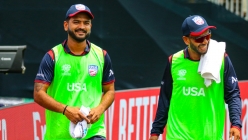Crowd support in Kolkata boosts Indian self-belief - Suresh Menon
2010 Feb 22 by Suresh Menon
Kolkata, Chennai and Bangalore and possibly Mumbai guarantee crowds and knowledgeable ones at that. Test cricket is about tradition, not politics. The so-called rotation policy ought to be restricted to centres outside these.
By Suresh Menon
Comments
Not all the lessons from the poorly-hyped South Africa series came from the field of play. It was good to see Harbhajan Singh return to his match-winning ways, and Mahendra Singh Dhoni marshal his limited bowling attack on the final day in Kolkata. With just three bowlers at his command, Dhoni rotated them well enough for victory with just a few deliveries remaining.
But I suspect that if the situation had been similar in the first Test at Nagpur, South Africa might have got away with a draw. The determination on Hashim Amla’s face (and his bat was as broad as his heart) was something to see.
What pushed Harbhajan on a still decent track was as much his own self-belief as the vociferous and unstinted support from a packed Eden Gardens stadium. It might have only been some forty thousand or so as the stadium is being renovated for the World Cup, but such support puts a spring in the bowler’s step, and – dare I say it – an extra spin on the ball.
Kolkata have taken Harbhajan to heart in the manner they did Mohammad Azharuddin earlier and Gundappa Vishwanath and B S Chandrasekhar before that. Not enough research has been done on the way a crowd energises a performer, but empirical evidence suggests that crowd support is a crucial element in taking a bowler or batsman that extra yard. You only have to look at the statistics of the above players at Eden Gardens. Harbhajan’s victory lap after the last wicket was to pay a tribute to the extra bowler in the Indian team – the Kolkata crowd.
And that is why it wouldn’t have happened in Nagpur where empty stands greeted the players. In fact, it must be depressing for a home side to get no home support. And the question that asks itself naturally is, why Nagpur at all? Or Ahmedabad? Or anywhere that India have played Test cricket watched by three spectators and a dog?
Kolkata haven’t hosted a Test since 2007 because the Cricket Association of Bengal belongs to the wrong column in the Board arithmetic. Chennai, which has seen some great Tests, some great crowds, and a wonderfully festive atmosphere during Pongal in mid-January, hasn’t had a Pongal Test since 1988 (and only ten Tests since). That means a whole generation has grown up without the faintest idea of the Pongal Test tradition.
Why does the Board insist on thrusting Test cricket down the throats of centres which would rather have one-day or Twenty20 matches? Test matches have been played on 20 grounds in India, so obviously a certain amount of give-and-take is necessary. The Board could lay down guidelines: poor crowds and you lose your status as a Test venue. This will help the spectators too since there might be an effort to bring down the often exorbitant price of tickets to pack in the crowds.
Kolkata, Chennai and Bangalore and possibly Mumbai guarantee crowds and knowledgeable ones at that. Test cricket is about tradition, not politics. The so-called rotation policy ought to be restricted to centres outside these.
There is also the question of the ridiculous two-match series. Between top teams, this ought to be banned. Even if the current series was arranged hurriedly to take advantage of India’s new status at the top of the table, it left everybody unfulfilled. Two fine matches, and just when the series was beginning to hit its stride, it is all over. Test cricket deserves better – especially since Kolkata has shown that it is alive and well in some parts of India.




